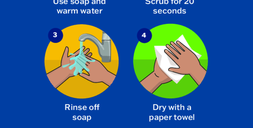Some germs (viruses, bacteria, and parasites) affect your stomach and intestines and can cause vomiting, diarrhea, stomach cramps, and fever. These foodborne and diarrheal infections, or enteric illnesses, are spread by eating contaminated food ("food poisoning"), drinking or swimming in contaminated water, touching animals or their environments, or coming into contact with the feces (poop) of an infected person.
Anyone can get sick from these germs. Some people are more likely to have a serious illness. This includes children under five years old, adults aged 65 and older, pregnant people, and people with weakened immune systems.
In Vermont, the most common foodborne and diarrheal infections are:



